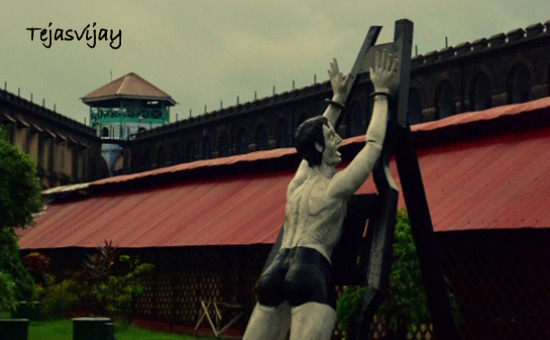- Article tells the history and
significance of the Cellular Jail in the Andaman Islands and why you should
include it in your Andaman tour itinerary.
Nestled amidst the azure waters of the
Andaman Sea lies a somber reminder of a dark chapter in Indian history: the
Cellular Jail. Built by the British colonial rulers in the late 19th century,
this formidable structure served as a notorious prison where countless freedom
fighters were incarcerated.
The Cellular Jail, also known as Kala
Pani, stands today as a symbol of the resilience and sacrifices made during
India's struggle for independence.
In this article, we will delve into the
captivating history and significance of the Cellular Jail in the Andaman
Islands and why you should include it in your Andaman tour itinerary.
Construction and
Architecture
The construction of Cellular Jail
commenced in 1896 and was completed in 1906. The unique design of the prison,
resembling a seven-winged structure, was aimed at maximizing surveillance and
isolating inmates from one another.
The architecture, attributed to British
engineer Lieutenant Colonel J.F. Begg, featured individual cells arranged in a
radial pattern, allowing for minimal communication between prisoners. This
design became synonymous with the oppressive environment of the jail.
Purpose and Infamous
Inmates
The Cellular Jail served a dual purpose
for the British colonial administration. Firstly, it was a place of punishment
for freedom fighters who posed a threat to their rule. Secondly, it was
intended as a deterrent to instill fear in the hearts of those who dared to
resist British authority.
 Batukeshwar Dutt & Bhagat Singh threw two
non-lethal bombs & Hindustan Socialist Republican Association leaflets in
the Central Assembly on 8/4/1929.
Batukeshwar Dutt & Bhagat Singh threw two
non-lethal bombs & Hindustan Socialist Republican Association leaflets in
the Central Assembly on 8/4/1929.
The jail primarily held political
prisoners, including prominent leaders like Veer Savarkar, Batukeshwar Dutt,
and Fazl-e-Haq Khairabadi. These prisoners were subjected to inhumane
treatment, with torture and forced labor being common practices.
 How Indian prisoners were treated in Cellular Jail.
How Indian prisoners were treated in Cellular Jail.
Life in Cellular Jail
Life within the walls of the Cellular
Jail was marked by immense suffering and hardship. The prisoners endured gruelling
physical labor under harsh conditions, coupled with psychological torture. The
isolation and confinement were designed to break their spirits, but instead, it
fostered unity and resilience among the inmates. Despite the oppressive
atmosphere, they found ways to communicate through secret codes and messages,
sharing stories of bravery, sacrifice, and the dream of a free India.
The Struggle for Independence
The Cellular Jail became a crucible for
the freedom struggle, with prisoners turning their captivity into a platform
for resistance. They used the power of the written word to keep the flame of
nationalism alive, penning poems, songs, and revolutionary literature. Despite
the distance from the mainland, the inmates remained connected to the broader
movement for independence. Their indomitable spirit and unwavering
determination inspired generations to continue the fight against colonial rule.
Preservation and
Remembrance
In 1969, the Cellular Jail was declared
a National Memorial, acknowledging its historical significance. Efforts were
made to restore and preserve this iconic structure, transforming it into a
museum and a symbol of remembrance. The galleries within the jail showcase artefacts,
photographs, and written accounts that provide visitors with insights into the
lives of the brave freedom fighters who endured unimaginable hardships within
its walls.
 Picture of Veer Savarkar at Cellular Jail.
Picture of Veer Savarkar at Cellular Jail.
Conclusion
The Cellular Jail in the Andaman Islands
stands as a testament to the struggles and sacrifices made during India's fight
for independence. It serves as a stark reminder of the price paid by those who
yearned for freedom.
This historical site attracts visitors
from around the world, allowing them to pay homage to the brave souls who
suffered in the pursuit of a sovereign nation. If you are on a family trip to
Andaman, you should for sure visit this place. There are lot of tour operators
in Andaman that can help you with customized Andaman family
tour packages.
The Cellular Jail will forever occupy a
significant place in India's history, reminding us of the indomitable spirit of
its inmates and the triumph of the human will in the face of adversity.
Also
read
1. Album
of Cellur Jail
2. Album
Beaches of Andaman and Nicobar
3. Album
of Scuba Diving in Andaman and Nicobar